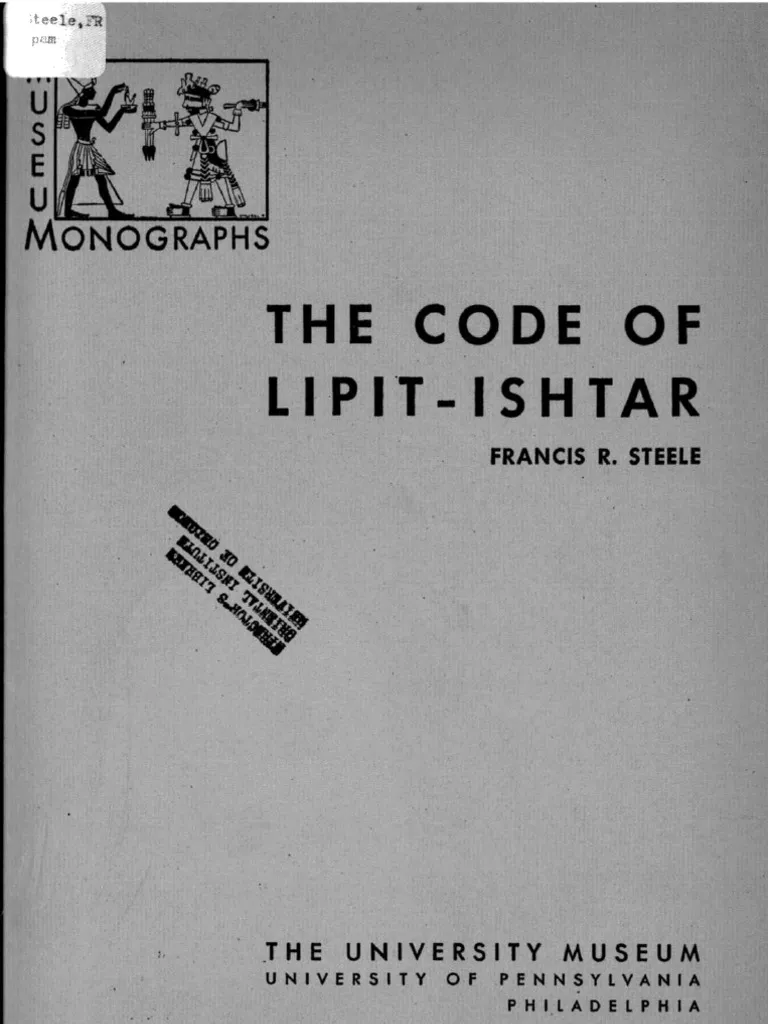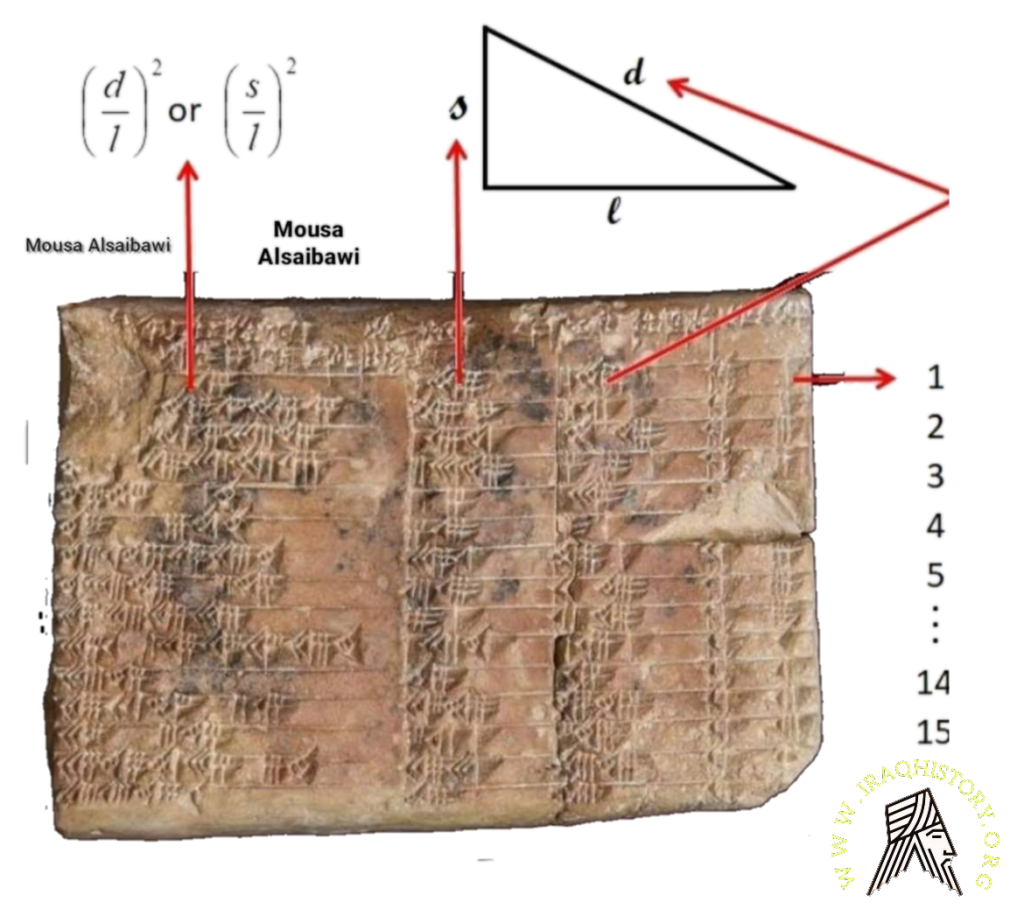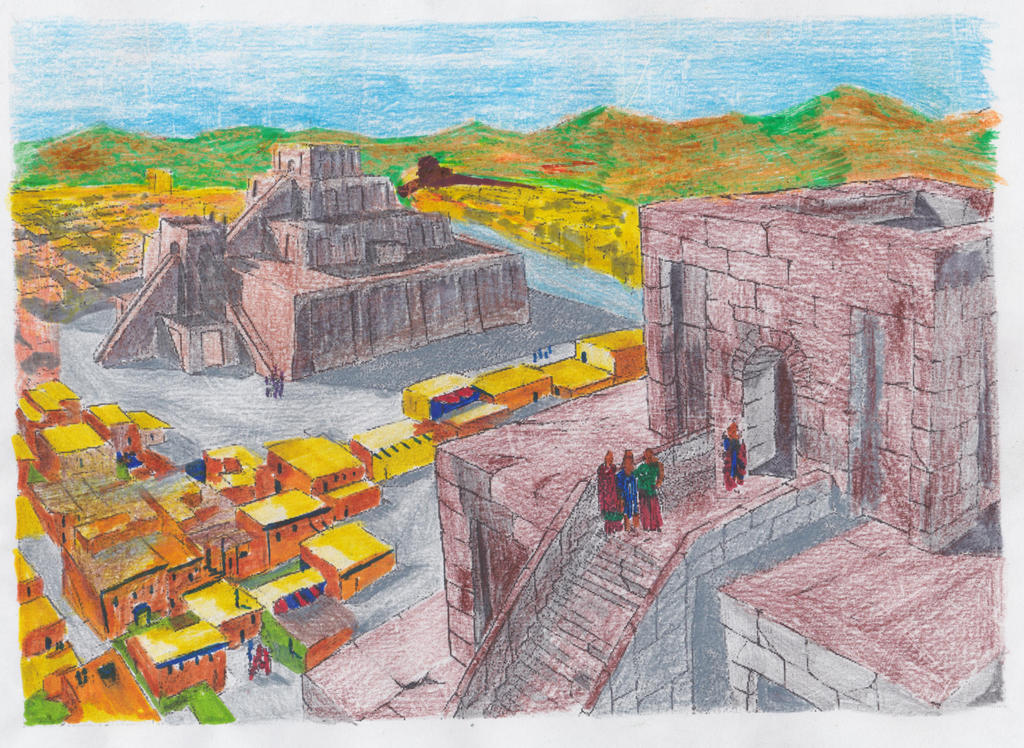OLD BABYLONIAN PERIOD
Following the downfall of the 3rd Dynasty of Ur and the withdrawal of the Ela mites, several independent city states emerged; among them Isin and Larsa. Other new kingdoms were founded at Babylon, Uruk Eshnunna and Ashur and in the city of Mari a new independent dynasty came to power. The population of Iraq was then a mixture of several ethnic groups including the Sumerian and Semite (either of long standing Ak- kadian stock or from the recent migration from the west), the Elamite, Hurrian, and Assyrian.
A struggle for power between these city-states lasted for over two centuries and ended with the triumph of Babylon, when its King Hammurabi succeeded in elimina- ting his rivals and subduing all other cities. He built a unified empire the Old Babylon- ian Empire which exercised hegemony over practically the whole of Mesopotamia The period which opens with the fall of the 3rd Dynasty of Ur and ends with the fall of Babylon is called by historians the Old Babylonian Period, and lasted four centuries until about 1594 В.С.
Below we mention some of the more important of these rival dynasties:
Dynasty of Isin (2017-1794 B.C.)
The ruins of the city of Isin, today known as Ishan al-Bahriyat, lie about 20 kilo- metres to the south of Afak in southern Iraq. The fifteen kings of this dynasty reigned 226 years (2017-1794 B.C.) and were renowned for their building achievements and for the prosperous conditions and the respect for ancient tradition which characterized their reigns. Bricks from important buildings at Ur and other cities neighbouring Isin are known bearing the names of some of the kings of Isin. The first king in the dynastic line of Isin is Ishbi-Erra.
Ishbi-Erra 𒀭𒅖𒁉𒀴𒊏 (2017-1985 B.C.) was originally a governor owing allegiance to Ibbi-Sin, King of Ur, but the increased nomadic pressure on Ur, particularly from the west, brought disruption deep into the heart of Sumer and Ibbi-Sin’s preoccupation with quel- ling sedition and fighting the Elamites, gave Ishbi-Erra a golden opportunity to proclaim himself King in Isin and to found in it a new ruling dynasty of which the fifth King Lipit Ishtar is most famous.
Lipit Ishtar (1934-1924 B.C.) is the famous promulgator of a code of law which was inscribed on clay tablets and which is earlier than Hammurabi’s code of law by over one and a half centuries. Clay texts mentioning the name of the son of Lipit- Ishtar incidentally give his title as chief-priest in the temple of the God Nanna of Ur. Lipit-Ishtar was succeeded upon the throne by Ur-Ninurta.

The Lipit-Ishtar code, as it is now generally named, is not inscribed on a stele but on a sun-baked clay tablet. It is written in the cuneiform script, but in the non-Semitic Sumerian language. The tablet was excavated some fifty years ago, but for various reasons had remained unidentified and unpublished all these years. As reconstructed and translated with my help by Francis Steele, assistant curator in the University Museum, it is seen to have contained a prologue, epilogue, and an unknown number of laws of which thirty-seven are preserved wholly or in part.
Ur-Ninurta bears a Sumerian name showing that Sumerian influence was still pre- valent in some provinces to the south. At this period the conflict betwen Isin and Larsa grew in scale and another king, Erra-Imitti, came to power. The story of Erra-imitti’s death and his successor deserves to be told. To escape the consequences of evil omens, ne placed upon the throne, temporarily, a gardener as a substitute king, but died un-
expectedly himself. The lucky gardner, Enlilbani, did not relinquish the throne and was installed as king.
Enlil-bani continued to rule in Isin for twenty-four years, during which he showed great ability in administration. Several other kings followed him on the throne, but their powers were drastically curtailed to cover only Isin and the surrounding towns. Damiq-ilishu was the last king of this dynasty, and during his reign the city of Isin was captured by Rim-Sin, king of Larsa, and son of the Elamite Kudur-mabuk. This marked the end of the Dynasty of Isin (1794B.C.).
Damiq-ilishu 𒁕𒈪𒅅𒉌𒉌𒋗
was the 15th and final king of Isin. He succeeded his father Sîn-māgir and reigned for 23 years. Some variant king lists provide a shorter reign but it is thought that these were under preparation during his rule. He was defeated first by Sîn-muballiṭ of Babylon (c. 1748 – 1729 BC) and then later by Rīm-Sîn I of Larsa
Dynasty of Larsa (2025-1763 B.С.)
The site of Larsa, known today as Senkarah, lies about 70 km. to the northwest of Nasiriyah. The dynasty comprised 14 reigns with a total duration of 264 years (2025- 1763 B.C.), during which the land came under strong influence from Elam in the East. The founder of the dynasty was Naplanum (2025-2055 B.C.) and during his reign and that of his successors, Larsa engaged in a continuous struggle with her neighbouring city-state of Isin, and was often overshadowed by her. However, eventually Larsa had the upperhand, when Kudur-mabuk, a ruler of Elamite extraction, ousted the ruling king
of Larsa, Silli-Addad, and put in his place his son, Warad-Sin. Warad-Sin (1834-1823) is associated with the rebuilding and restoration of temples and other monuments. Although his reign lasted only ten years, many inscriptions have been found commemorating his deeds. He was succeeded on the throne of Larsa by his brother Rim-Sin.
Rim-Sin (1822-1763 B.C.) This powerful king and great conqueror managed to bring under his own domination most of the south of Iraq. Although Kudur-Mabuk was an Ela- mite who held sway in the land of Yamutbal in the eastern mountains bordering Elam his two sons Warad-Sin and Rim-Sin bear Semitic names which suggests that this family had permanently established itself in Iraq and lost its connection with Elam. At that time a less powerful dynasty was reigning in Uruk; among its kings are the Semites Sin-Kashid (1865-1833 B.C.) and Sin-Gamil. Rim-Sin’s conquest, however, extended to this city which soon became part of Larsa’s possessions. In the 32nd year of his reign Rim-Sin marched towards Isin and succeeded in overthrowing its king Damiq-ilishu (1794 B.C.). He then became undisputed master of the entire south. His reign lasted sixty years during which he introduced domestic reforms, saw to the assimilation of newly arrived foreigners, renovated many temples and monuments and improved agricultural condition by digging irrigation canals. But in the end a powerful king of the First Dynasty of Babylon, the famous Hammurabi, came on the scene, and taking the offensive at tacked Larsa. After a long series of five battles, Larsa came to an end.
During the first part of the Old Babylonian Period, when war was being waged between Isin and Larsa, there existed other independent kingdoms such as:
Eshnunna (modern Tell Asmar) is situated in the Diyala area and was out of Rim Sin’s political influence. This city, in which several independent rulers reigned, lay within the sphere of Sumero-Akkadian civilization but also felt the influence of other cultures. The ancient town whose ruins are now under Tell Harmal, (a small mound near the right bank of the Diyala River on the outskirts of Baghdad), the ruins of Tell al-Dhibai, in its neighbourhod, and several other ancient towns in the same location, were part of this Kingdom. The Iraq Directorate General of Antiquities excavated at Tell Harmal a large collection of more than 3,000 inscribed clay tablets as well as a variety of other objects. This city consists of a heavily fortified enclosure in the form of irre- gular rectangle. In the middle there is a temple surrounded by private houses. The clay tablets include religious, administrative lexicographical, and literary mathematical and other texts. Among the sensational finds are two tablets which contain the code of laws by which the Kingdom of Eshnunna wasadministered inscribed in cuneiform, in the Old Babylonian language. These laws perhaps date back to a period close to the reign of Lipit-Ishtar, king of Isin, about one and a half centuries before the time of Hammurabi. Other clay tablets were found at Tell al-Dhibai including a most important geomet rical text.

Plimpton 322 world’s oldest and most accurate trigonometric table
A 3700-year-old Babylonian clay tablet discovered in Mesopotamia iraq
rewrites the history of Mathematics
Plimpton 322 Nat Geo
Sources :
Faraj Basmachi + Harvard University + British Museum + Iraqi Museum + Louvre Museum + University of Chicago


